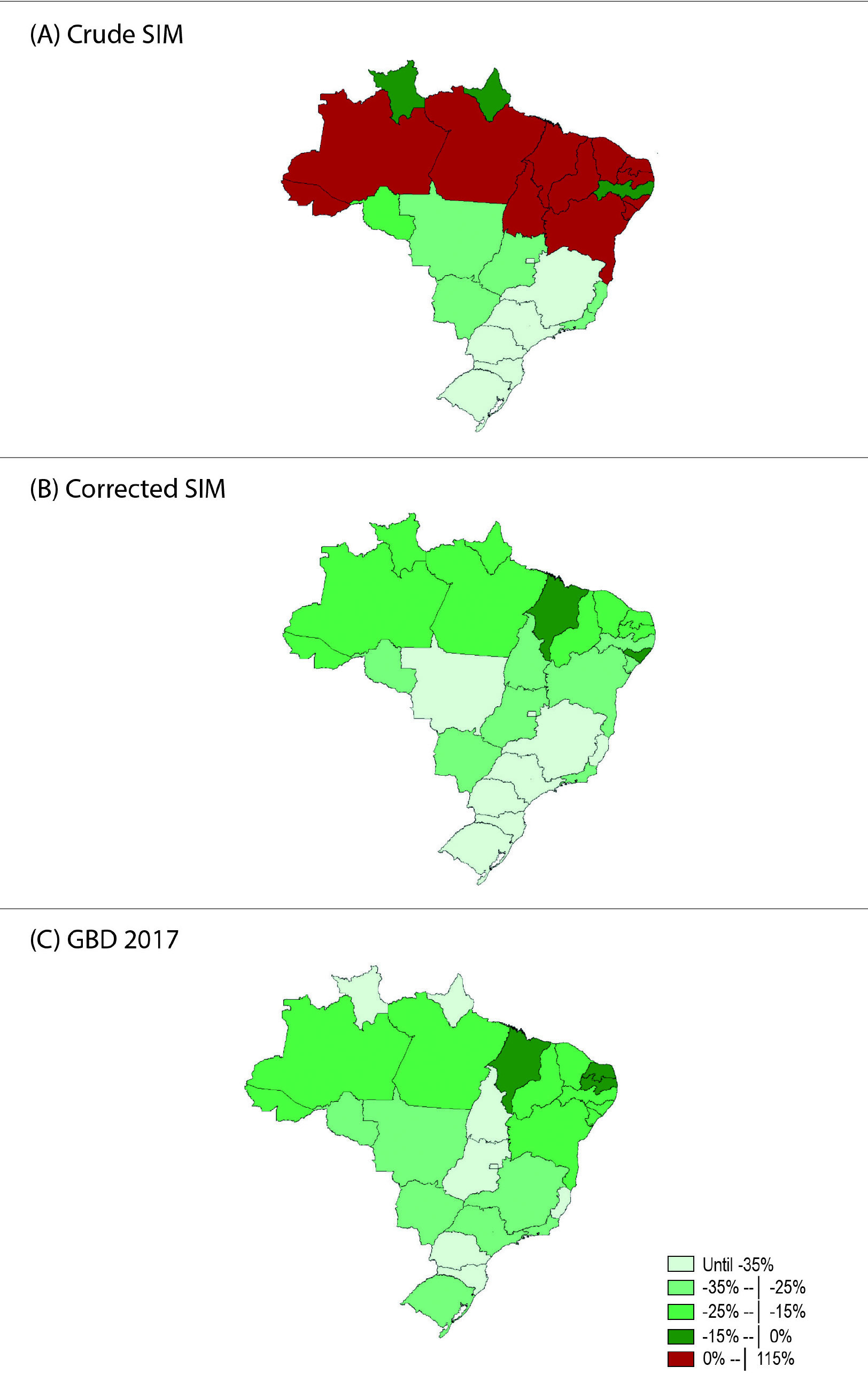Volume 115, Nº 2, August 2020
DOI: https://doi.org/10.36660/abc.20190867
ORIGINAL ARTICLE
Cardiovascular Disease Mortality According to the Brazilian Information System on Mortality and the Global Burden of Disease Study Estimates in Brazil, 2000-2017
Deborah Carvalho Malta
Renato Teixeira
Gláucia Maria Moraes de Oliveira
Antonio Luiz Pinho Ribeiro

Figure 5 – Percentage variation of standardized cardiovascular mortality rates from 2000 to 2017. Sources: SIM and Brazil GBD Study 2017.
Abstract
Background: The Brazilian Information System on Mortality (SIM) is of vital importance in monitoring the trends of cardiovascular diseases (CVDs) and is aimed at supporting public policies.
Objective: To compare historical series of CVD mortality based on data from the SIM, with and without correction, and from the Brazil Global Burden of Disease (GBD) Study 2017, in the 2000-2017 period.
Methods: Analysis of CVD mortality in Brazil between 2000 and 2017. Three CVD mortality estimates were compared: Crude SIM, Corrected SIM, and GBD 2017. Absolute numbers and age-standardized rates were used to compare the estimates for Brazil, its states and the Federal District.
Results: In the SIM, the total of deaths ranged from 261,000, in 2000, to 359,000, in 2017. In the GBD 2017, the total of deaths ranged from 292,000 to 388,000, for the same years, respectively. A high proportion of the causes of death from CVD corresponded to garbage codes, classified according to the GBD 2017, reaching 42% in 2017. The rates estimated by GBD ranged from 248.8 (1990) to 178.0 (2017) deaths per 100,000 inhabitants. The rates of the Crude SIM and Corrected SIM also showed a reduction for the whole series analyzed, the Crude SIM showing lower rates: 204.9 (1990) and 155.1 (2017) deaths per 100 thousand inhabitants. When analyzing by the states and Federal District, the Crude SIM trends reversed, with an increase in mortality rates in the Northern and Northeastern states.
Conclusion: This study shows the decrease in CVD mortality rates in Brazil in the period analyzed. Conversely, when analyzing by the states and Federal District, the Crude SIM showed an increase in those rates for the Northern and Northeastern states. The use of crude data from the SIM can result in interpretation errors, indicating an increase in rates, due to the increase in death data capture and the improvement in the definition of the underlying causes of death in the past decade, especially in the Northern and Northeastern regions, justifying the use of corrected data in mortality analyses. (Arq Bras Cardiol. 2020; 115(2):152-160)
Keywords: Cardiovascular Diseases/mortality; Data Accuracy/trends; Health Information System/trends; Epidemiology















